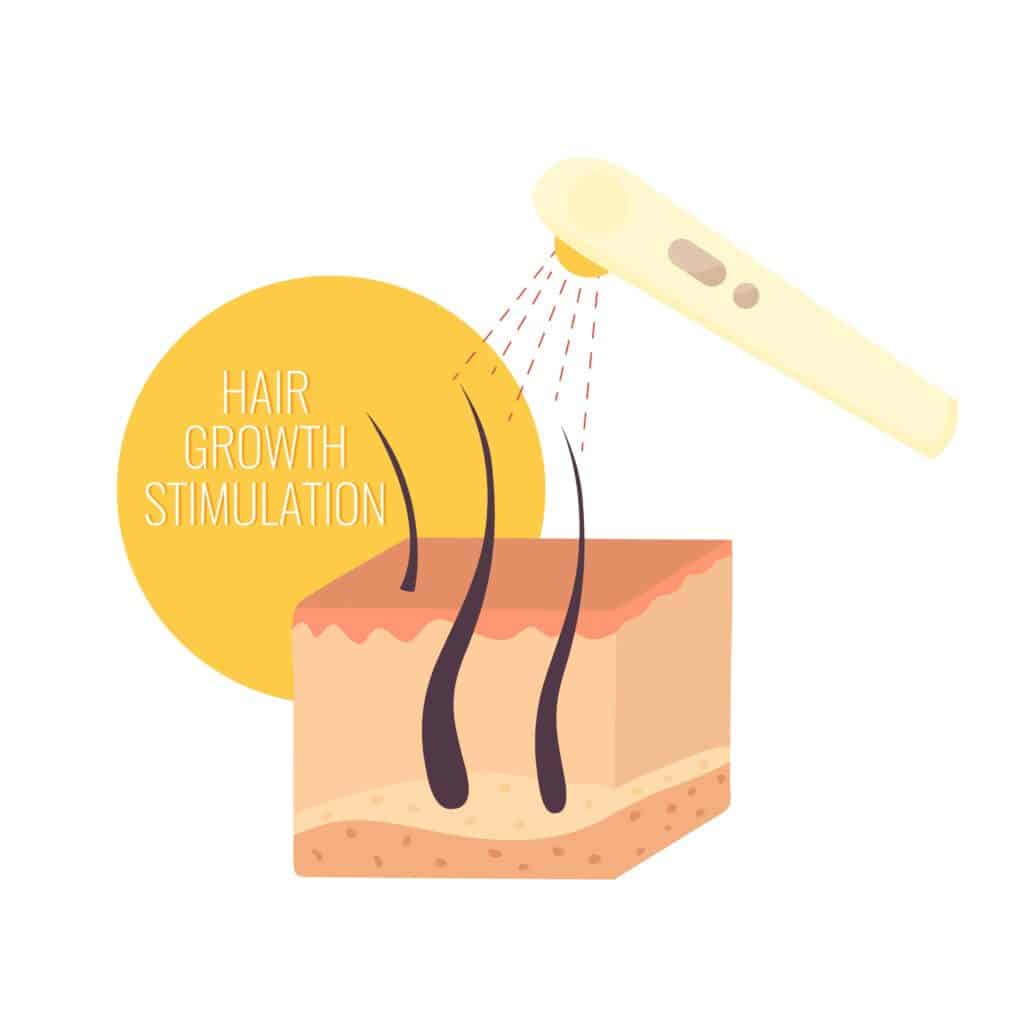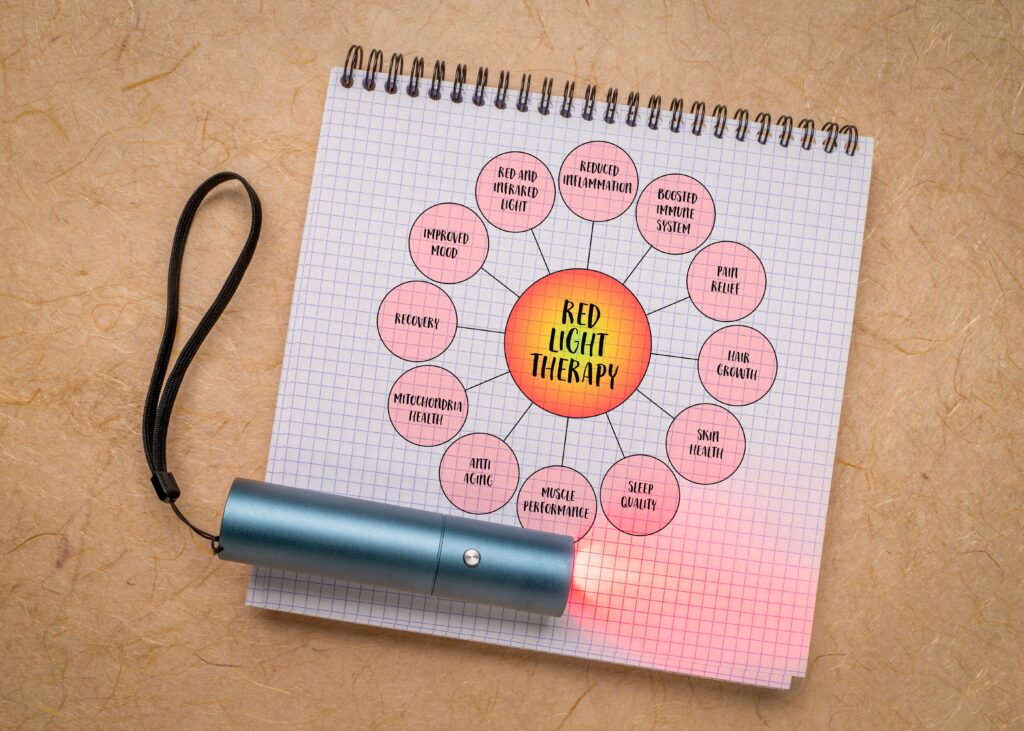Most people lose about 50 to 100 hairs from their scalp every day. While the majority of individuals grow those hairs back, some people don’t. The good news is that there is a wide array of solutions available to restore your hair to its former glory. Among the various treatments available, there is red light therapy for hair loss.
The latter has gained a lot of attention in recent years for its potential effectiveness for hair loss. In this blog post, we will explore what red light therapy is, its effectiveness, potential side effects, and whether it can reverse gray hair.
What is Red Light Therapy for Hair Loss?
Red light therapy, also known as low-level laser therapy (LLLT), is a non-invasive treatment that uses red or near-infrared light to stimulate hair growth. This therapy involves exposing the scalp to light emitted by laser devices. The light penetrates the scalp, increasing blood flow to the hair follicles and promoting hair regrowth. This treatment is considered safe and can be performed at home using a laser device or in clinics.
Causes of Hair Loss
Hair loss can really lower your self-esteem and confidence. So, if you’re experiencing challenging hair loss, it’s important to find a solution that really works. Here are some of the leading causes of different types of hair loss:
- Heredity (androgenetic alopecia): This is often the leading cause of hair loss that affects both men and women. It’s linked to genetics and hormones. In men, it typically appears as a receding hairline or baldness at the crown. In women, it often causes thinning hair all over the scalp.
- Age: As we get older, hair growth slows down naturally, and hair follicles can shrink. This can lead to thinner hair and a gradual loss of hair density.
- Hormonal changes: Hormonal fluctuations can trigger hair loss. This may happen during pregnancy, childbirth, or menopause.
- Medical conditions: Some medical conditions, such as alopecia areata (an autoimmune disease that attacks hair follicles), scalp infections (ringworm), and trichotillomania (hair-pulling disorder) can cause hair loss.
- Stress: Severe physical or emotional stress can cause temporary hair loss. This type of hair loss usually resolves on its own once the stressor is gone.
- Tight hairstyles: Tight hairstyles that pull on the hair, such as tight ponytails or braids, can lead to traction alopecia.
Is Red Light Therapy for Hair Loss Effective?

Yes, low level light therapy can help promote hair growth in both men and women. Studies have shown promising results for red light therapy in promoting hair regrowth. Research suggests that red light therapy may increase blood flow to the scalp, which can nourish hair follicles and stimulate them to enter the growth anagen phase. Additionally, it might reduce inflammation and improve hair follicle function.
A review of multiple studies found red light therapy to be particularly effective for androgenic alopecia, the most common type of hair loss in both men (male pattern baldness) and women (female pattern hair loss). These studies reported increased hair density and thickness after treatment.
Note that red light therapy may be less effective for people in the advanced stages of hair loss than for those in the early stages.
What Do Dermatologists Say About Red Light Therapy?
Dermatologists generally view red light therapy as a promising treatment for hair loss. Some dermatologists recommend red light therapy as a complementary hair loss treatment, particularly for those experiencing mild to moderate hair loss.
It’s generally considered safe and well-tolerated. However, it’s crucial to consult a dermatologist before starting any new hair loss treatment, including red light therapy. They can assess your individual situation and determine if red light therapy is a suitable option for you.
What Are The Side Effects Of Red Light Therapy?
Red light therapy is generally considered safe, but it can have some side effects. These side effects are usually mild and temporary and often resolve on their own shortly after treatment. Here are the potential side effects.
- Scalp irritation: Some people might experience a slight irritation or a tingling sensation on the scalp. This is usually temporary and subsides soon after the treatment session.
- Redness and scalp tenderness: Temporary redness and tenderness of the treated area can occur. This is due to increased blood flow and usually fades within a few hours.
- Dry scalp: The scalp might feel drier than usual after therapy. But you can manage this with moisturizing hair care products.
- Itching: Some users may experience mild itching on the scalp. This is often due to increased blood circulation and stimulation of the hair follicles.
- Warm sensation at the site: Some individuals may feel a warm sensation on the treated area. This is typically a sign that the therapy is working as intended and is not usually a cause for concern.
- Headaches: In rare cases, individuals might report headaches after using red light therapy devices. This could be due to prolonged exposure to the light or sensitivity to the treatment.
Can Red Light Therapy Reverse Gray Hair?
Unfortunately, red light therapy is not proven to reverse gray hair. Gray hair occurs due to a decrease in melanin production in the hair follicles. Although red light therapy increases blood flow to the hair follicles and promotes healthy hair growth, it does not affect melanin production.
Hair Loss Treatment Alternatives to Red Light Therapy

While red light therapy is a popular treatment for hair loss, there are other alternatives available. If you’re looking for other alternative solutions to prevent your hair loss, you’ll find below some of the most popular and effective:
Topical Medication
Medications like Minoxidil and Finasteride can reduce hair shedding and promote hair growth. Steroid creams can help with alopecia areata symptoms. Always use these treatments under a doctor’s guidance, as they may cause side effects or may not work for everyone.
Platelet-Rich Plasma (PRP) Therapy
PRP therapy involves taking a small amount of your blood and injecting it into your scalp. This nourishes hair follicles, increasing hair density and thickness.
Hair Transplants
A hair transplant is an effective procedure where healthy hair from the donor area (usually the sides or back of the head) is extracted and implanted in the balding area. The best hair transplant clinics offer highly experienced surgeons, modern technologies, and state-of-the-art facilities to make sure you get perfectly natural-looking results.
Start Your Journey For Hair Restoration
If you are experiencing excessive hair loss, hair transplant surgery can restore your hair. Cosmedica Clinic is a leading hair restoration clinic in Turkey, offering affordable hair loss treatments, experienced surgeons, and the latest technologies, like the DHI Sapphire Method, to deliver exceptional results. You can look at the before and after photos to see the remarkable changes for yourself.
Book a free consultation anytime to learn more about your hair condition and how a hair transplant procedure can help you.
